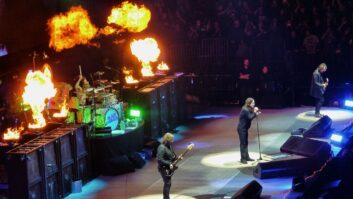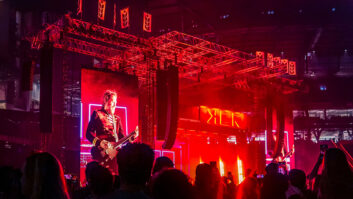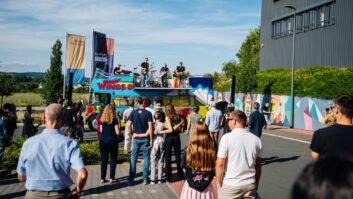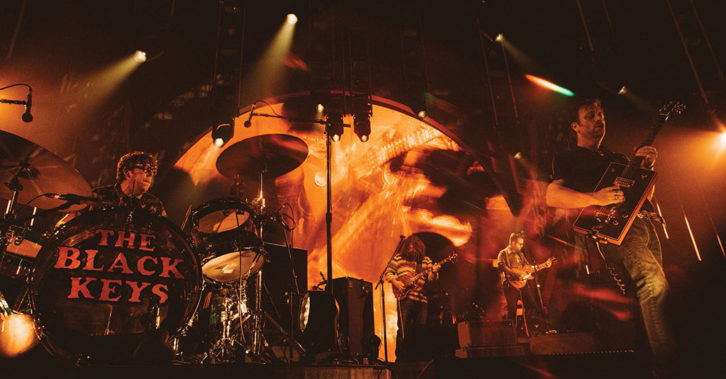
Photos by Catie Laffoon
“It’s nice to see a blues rock band sell 12,000 tickets in an arena. You don’t see that so much anymore,” says production manager Chris Kansy. A veteran of megatours with Roger Waters, Janet Jackson, Smashing Pumpkins and many others, Kansy joined the Black Keys for their current run of dates supporting their latest album Let’s Rock (Nonesuch, 2019).
Audio gear for the tour is provided by Eighth Day Sound. “The service coming from their office is first-rate,” Kansy says. “The attention to detail is great. They have the experience and the personnel to back it up.”
The Black Keys—led by frontmen Dan Auerbach (guitars, vocals) and Pat Carney (drums, vocals)—along with support acts Modest Mouse and Shannon and the Clams, arrived at San Francisco’s shiny, new Chase Center arena last November, and Kansy says that, thanks to the efficient crew and well-designed venue, an easy load-in saved the band some headaches.
“We were coming in from L.A., and we were three hours late arriving after a long day and bad traffic. But the load-in and rigging were incredibly easy, and we had lots of space to work. I went from saying, ‘Sorry guys, no soundcheck today,’ to offering them a soundcheck just a little later than normal.”
Longtime Eighth Day systems engineer Mark Burnish tunes each room, night to night. “I rely pretty heavily on Mark for that,” says front-of-house engineer Jason Tarulli. “Mark has also worked with the Kings of Leon and many other bands, and he’s really good at getting things sorted so that when I walk up to the desk, I’m already pretty happy with it. Then I’ll run some tracks from the previous show and listen. I have an outboard GML 8200 parametric EQ I might adjust a little bit after having a discussion with Mark about certain things, like delay times.”
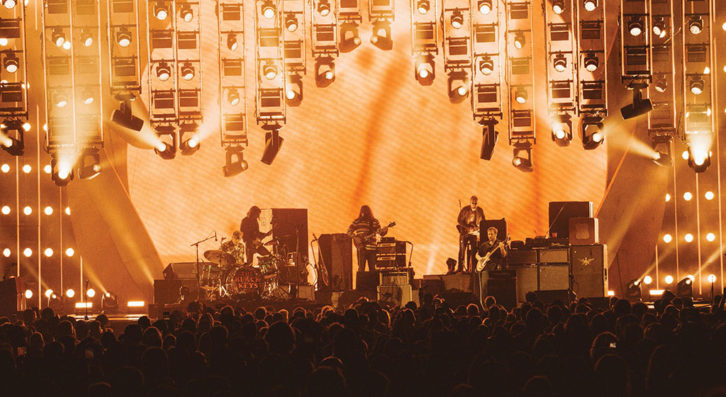
Tarulli has been mixing Black Keys shows since the band’s club days in Ohio. The latest incarnation of his rig features a DiGiCo SD12 console. “It sounds good, it’s easy to use, and the compact footprint is great,” Tarulli observes. He supplements the board with DiGiCo’s MGB card for multitrack recording and playback, the GML EQ, and additional outboard gear, including an SPL Transient Designer (for drums), dbx 160A (snare and bass), Lexicon 480L (vocals and drum effects), Sonnox dynamic EQ (vocals and Auerbach’s electric guitars), and an API Vision channel strip (acoustic guitars).
The P.A. system has been updated since Mix last covered the Black Keys in 2015, when the band had a d&b J Series system; now they’re carrying d&b GSL loudspeakers with array-calculation software and Lake LM44 control.
“In terms of the P.A., we basically picked up where we left off four years ago,” Tarulli says. “We have essentially the same audio vendor, essentially the same P.A., but with a different control package. The crew is also different this time.”
In addition to a new production manager in Kansy, the Keys have added engineer Neal Jensen at monitors, as their usual monitor mixer, Rob Elliot, is on the road with The Cure.
“In the late ’70s, I was in high school and we couldn’t afford anything, so we made our own gear, says Jensen, who mixes monitors on a Midas Pro X. “We learned a lot about how gear works and how to make modifications, and Dan loves that. That’s how he approaches his guitar rig and his playing. He uses all this crazy old stuff.”
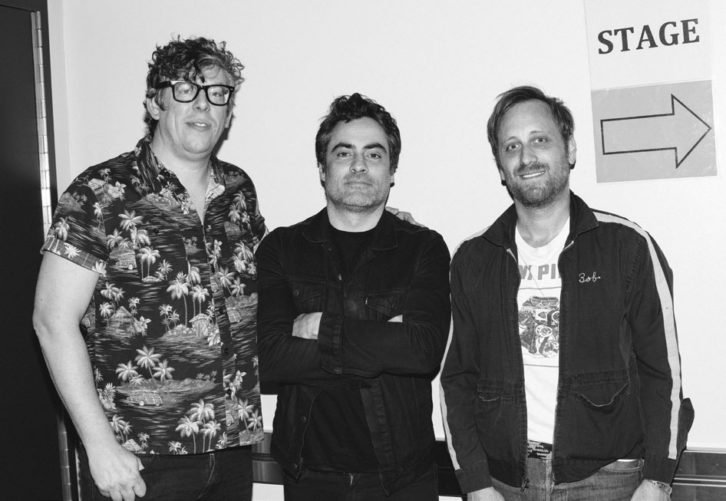
Onstage, Auerbach has two 810 Marshall cabinets, two Fender 410s, and two 12-inch Danelectro cabinets, all running all the time. “I have two microphones—one on one Fender cabinet and one on one Marshall—but I’m really not leaning on those much,” Tarulli says. “I mainly use Palmer DIs for electric guitars across the whole stage. Because of all the stage volume, reducing the number of open microphones helps quite a bit with intelligibility.”
Auerbach’s vocal is taken through an sE Electronics V7 microphone, through a Universal Audio UAD-2 Apollo Live, Sonnox Dynamic EQ and a Neve 5045 Primary Source Enhancer. “The V7 rejects some of the stage volume right off the bat, and that Sonnex multiband compressor has really helped with the vocals, as has the Neve, which filters out some of the background noise. It’s been a challenge because each room reacts differently to the stage volume and how the reflections get into the microphone, so I have to ride those pieces of equipment from song to song.”
Patrick Carney’s drums are also central to the Keys sound. Tarulli captures drums with an assortment of Sennheiser, Shure and Neumann microphones. The stage setup also includes d&b wedges for each of the musicians, and a new-old addition to Auerbach’s arsenal of “crazy old stuff”: four MSI double-15 sidefill boxes.
“A few years back, Dan was on Neil Young’s stage and he heard those boxes and he liked the way they sounded,” Tarulli says. “What they were doing was actually very similar to what we were doing with the Arcs, with four sidefills total instead of two. We looked at what boxes Neil uses, and they were these old MSI 215s in behemoth boxes, and Dan wanted to add those for the Keys tour.”
It fell to Kansy to source the boxes. “That was the biggest challenge—finding them,” Kansy says. “My first step was to contact Neil Young’s production manager, Steve Drymalski, who is a friend of mine, to identify them and how they use them. Then I started putting feelers out to see who had them. After a pretty long, extensive search, with a lot of people helping me, we found them—lo and behold—at MSI!
“We’re going back in time,” says Jensen. “The technology of those boxes is from the ’70s. When I first talked to Neil Young’s engineer about them, he was laughing and warning me, like, ‘Man, anything but those. I’ve had to travel with those for years.’ But I embrace this kind of stuff and they work perfect for Dan. I just take out a little bit of that 2k or 3k, that hurts people’s ears, and then they’re just these really smooth, big fuzzy boxes. I like line arrays, but there’s something to be said for the old stuff, too, in the right application.”
